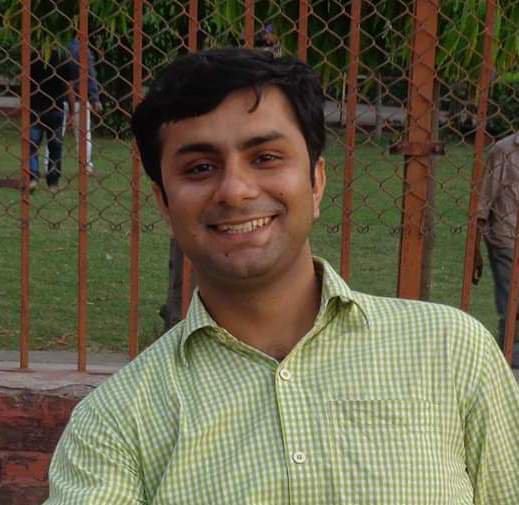The pandemic (COVID-19) has shaken human existence to the core and its vulnerability and utter helplessness before the cosmic power has been exposed. However, smart and intelligent human beings consider themselves, but the truth is that they remain puppets and playthings in the hands of unfathomable forces of Nature. The entire human race is bewildered and is nearly on the brink of collapse, both economically and physically owing to the ravages of this lethal virus. The medical fraternity is clueless to understand the exact nature of this deadly virus and its potential cure. The so-called biggest powers have been crippled by the callousness of this virus. The future of humanity is precarious and unpredictable. The irony of our life is that we don’t learn from the collective mistakes. The entire mankind must reflect, introspect and analyze the profound lessons the pandemic has to offer. Nature is trying to communicate to us the pressing need of simplifying and sublimating our lives under divine guidance and following the righteous paths to live in harmony and bliss. There is a need for mass-awakening.
The pandemic is also the grim reminder of growing greed, selfishness and vaulting or unbridled ambition of man. To satisfy his material pursuits, man indiscriminately exploits natural resources, the powerful exploit the weak. We need cohabitation and coexistence, not the excruciating struggle for existence. The pandemic also reminds us of the fleeting nature of life, the value of caring and sharing, the equality of all human beings irrespective of caste, creed, community, gender and financial status. etc. Implementing and imbibing the timeless teachings and philosophies of Sanatana Dharma can cure most of the ills and evils of contemporary society. It’s very pathetic and poignant to see Sanatana Dharma being relegated to the fringe of academic discourse.

The very mention of the word “Sanatana” normally evokes in the majority of people something outmoded, obsolete, hackneyed and defunct. People normally shy away from being leveled as “Sanatani. Being Sanatani is equated as being orthodox. ”Modern and Sanatana are often confused as the two clashing and conflicting, incompatible and irreconcilable ideas. In the name of modernity, political correctness and utterly erroneous notion of secularism, Indians have virtually banished everything related to Sanatana Dharma from mainstream academic discourse. The mainstream academic discourse is largely Eurocentric, where discussing the Western critical theories and philosophies are considered to be the unerring benchmarks of good intellectualism. Western paradigms are considered universal and incontrovertible. In India, mostly the so-called progressive intellectuals don’t want to engage themselves in a discussion and deliberation on Sanatana Dharma. Talking so is considered as a threat to their hard-earned respect and reputation of being a progressive-public intellectual and liberal thinker. The result of this apathy is the marginalization of “Sanatana Dharma” is Indian academia. The consequence of this neglect is also that- the young generation is completely oblivious of its cultural heritage or has quite a shallow and distorted idea of it, they are becoming culturally alienated. We must understand that Sanatana Dharma is intrinsically dynamic, it’s not static.
Being slack and unmindful about one’s cultural capital has long-term damaging repercussions and the posterity will have to reap the adverse consequences of it. The civilization which is not assertive of its heritage always remains consumer & importer of knowledge, it can never be the producer and exporter of knowledge. All other great civilizations have pride in their heritage and culture, they are very much conscious and proud of their shared identity and have the deep collective consciousness of their history and culture. The followers of Sanatana Dharma are mostly apologetic about their dharma, very few people proudly acknowledge that they are adherents of Sanatana Dharma. Its symbols and rituals are being denigrated and demonized. Slumbering ‘Sanatani’ has to awake, otherwise, its essence would be digested by other predator civilizations.
We need to understand the correct meaning of the word “Santana” because most often it is misunderstood. We also need to revive its timeless and universal teachings and philosophies. The word Sanatana means-‘eternal’ , something which is ever new.
The first and foremost trait of Sanatana Dharma is that there is no rigidity of ideas in it. Its philosophy is Aano Bhadra krtavo yantu vishwatch (Let noble thoughts come to me from all directions- Rigveda). It has always been inclusive and accommodating and has gladly embraced the best teachings of other faiths.
The cornerstones of Sanatana Dharma are Truth, Love, Compassion and Service. Sanatana Dharma teaches uncompromising commitment to truth, the truth which doesn't succumb to the temptations of life. It endorses the philosophy: ”Satyameva Jayate" (सत्यमेव जयते,"Truth alone triumphs”). It believes that love and compassion are the very foundations on which the edifice of human relations is erected. Without these qualities life wouldn't be worth living, it would be living hell. It is the love and compassion which moves us to serve the needy and poor. A loving and compassionate person sees “reflections of the Self everywhere” because he realizes that one's Self is the Self of all. He cannot see others in pain and suffering, there is no one stranger for such a person, there is no feeling of others. He has also an uncompromising attitude against dehumanizing behavioral patterns, discriminative social traditions, exploitative economic systems, aggressive political structures and dehumanizing and regressive religious practices. Another noble quality of Sanatana Dharma is unconditional service. A Sanatani believes परोपकार: पुण्याय पापाय परपीडनम्|| Altruism is a virtue, harming others is sin. He feels divinely connected to everyone and everything in the universe. Intellectual awakening as well as spiritual elevation of mankind is its main motto.
Sanatana Dharma professes no false certitudes. Its rituals and customs can be questioned. It’s not the proselytizing religion. It doesn't maneuver and manipulate adherents of other faiths to convert. It believes in transforming not converting, in elevating not in preaching. it identifies the undeniable divinity in man and lays down the ways of realizing that divinity.
Sanatana Dharma teaches reverence for all creatures- animate and inanimate both. There is the concept of selfhood in Sanatana Dharma which believes that there is life in all the living and nonliving things of the universe and it is because of this belief that everything (stone, tree, animal, human beings, etc.) is venerated and worshipped here. This practice of paying obeisance and worshiping all creatures of the universe is denounced by the so-called intellectuals. The concepts of modern physics often show amazing similarities to the ideas expressed in Sanatana Dharma. Fritjof Capra, a noted Austrian-born American physicist, in his book The Tao of Physics: An Exploration of the Parallels Between Modern Physics and Eastern Mysticism writes- according to quantum theory, the matter is never quiescent and inactive. Macroscopically, the material objects around us may seem passive and inert, but when we magnify such a ‘dead’ piece of stone and metal, we see that it is full of activity. Sanatana Dharma and Modern physics view matter not at all as passive and motionless but as continuously vibrating and in state of motion. They emphasize that the universe has to be understood dynamically because nature is not static but in a dynamic equilibrium. Sanatana Dharma has made innumerable contributions to modern society. Quantum Physics is being revolutionized with the help of Upanishadic ideas. Sanatana Dharma offers models for environmental sustainability and ecological balance. Sanatana Dharma’s philosophy of Vasudhaiva Kutumbakam (The World is One Family) is not restricted and confined to human beings only, it includes all living and non-living creatures. Pluralism and multiculturalism are there for the very essence of Sanatana Dharma.

Krishna Nand Mishra
Krishna Nand Mishra teaches English Literature at Kameshwar Singh Sanskrit University,Darbhanga. He can be reached at: krishnabhu53@gmail.com
- Why Do Humanities Matter?
- Aug 06, 2020
- Swami Vivekananda On Universal Brotherhood And Peace
- Jul 03, 2020
- Swami Vivekanand’s Philosophy: A Cure-all For Educational Woes
- Jun 20, 2020















